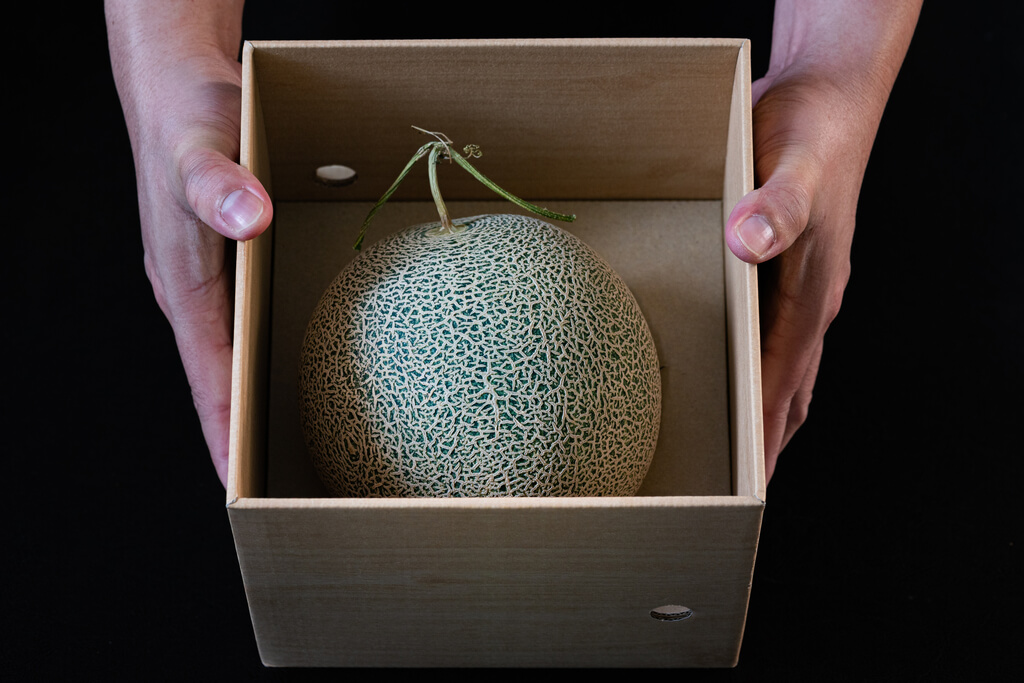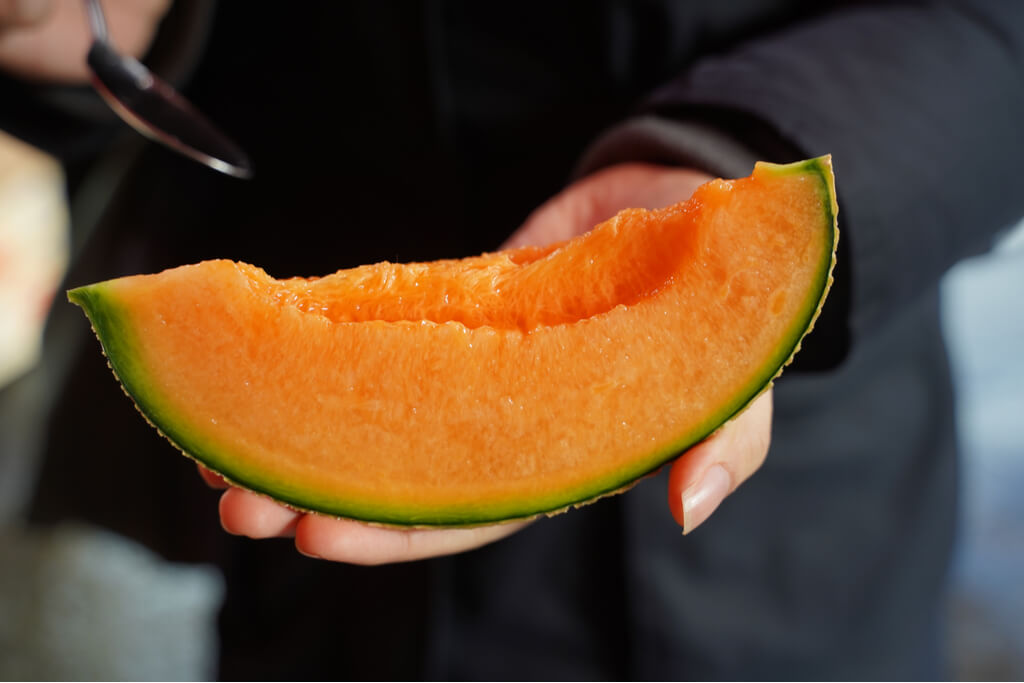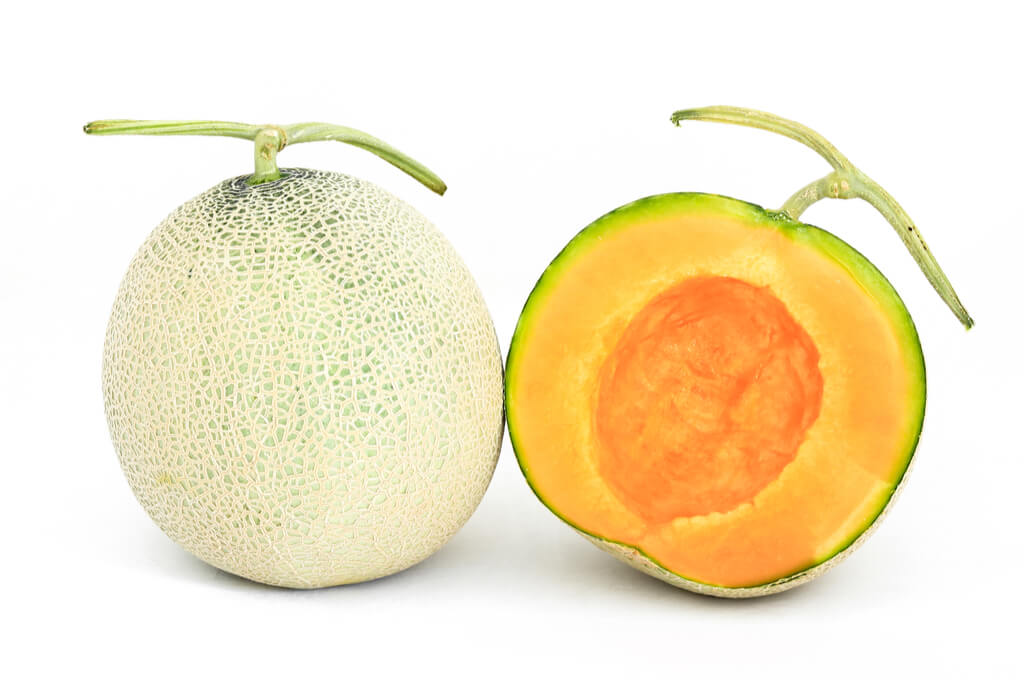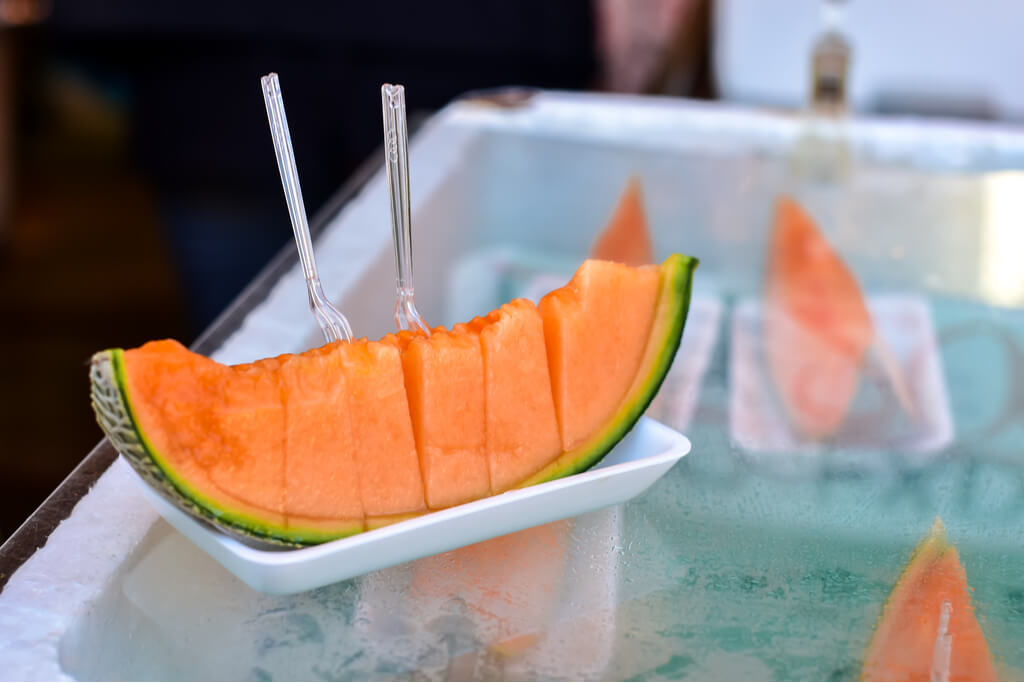Hokkaido’s Yubari Melon: The Best in Japan & the World
Tanner Schroeder
Posted on June 11, 2021
Share:

Hokkaido melon, also called Yubari melon, is considered the best melon in Japan. These melons can fetch prices of up to 5 million yen, or 45 thousand dollars, which makes them literally worth their weight in gold
Japanese fruit is known around the world as some of the best — and most expensive. Out of all these fruits, Japanese melons are some of the most well-known. Yubari melons may be the most expensive in the world, but are they also the best melons in the world? Let’s find out.
Why is Yubari melon grown in Hokkaido?
Melons thrive in a dry climate, like that of Hokkaido. The region’s volcanic ash-based soil also helps the melons grow, as water drains easily through the ashy soil, leaving it dry. The melons are grown in greenhouses, as they must be kept at temperatures ranging from 25 to 28 degrees Celcius. Melons also do best with sunny days and cool nights, another benefit of Hokkkaido’s northern climate. All this care and attention is what makes Yubari melons so delicious.

Why are Yubari melon so rare?
Yubari melons are not just any orange-fleshed melon grown in Japan. They aren’t even any melon grown in Hokkaido. They must be grown in the town of Yubari. Furthermore, the season of these melons is very limited, they are only ripe from late May to early August. The number of fields used to grow Yubari melon is also limited, as, after a single season, the field cannot be used for another crop until another year has passed. Finally, they cannot be stored for long, and they must be eaten very quickly after ripening, making it difficult to transport them out of Hokkaido, let alone internationally. If you wish to try Yubari melon yourself, the easiest and cheapest way might just be to travel to Yubari sometime from May to August.
What is the most expensive melon in the world?
The most expensive pair of Yubari melons sold went for 5 million yen or $45,000, sold to the Tokyo company Pokka Sapporo Food & Beverage Ltd. It was purchased in 2019 at an auction. This is also the most any melon has ever sold for. However, the melons sold at auction are not just any Yubari melons. They are the first harvest, often considered to be the sweetest and most delicious.
Determined to experience Japan for yourself? Sakuraco will spirit you away to Japan with new Japanese snacks, sweets, and teas every month. Discover Japan with Sakuraco.

After the onset of COVID-19 and the economic uncertainty, it brought on, the melons’ auction price dropped in 2020, to just 120,000 yen ($1,100). However, the price is going up again. This year, a pair of Yubari melons sold for 2.7 million yen. But who is willing to spend over a thousand dollars on a melon? Mostly, it is not individuals purchasing these rare and expensive melons, but rather large companies.

Ordinary people can purchase normal Hokkaido Yubari melons from specialty fruit stores, department stores, and even some grocery stores in Japan. One melon costs between 4000 and 6000 yen, or 40$-60$*check. Although that is a lot to pay for a melon, it is much more reasonable than the auction price of 10,000$. However, even these melons are not purchased and eaten casually in Japan. They are usually purchased to give as gifts to friends, colleagues, and bosses.
How to eat Yubari melon?
In Japan, a Yubari melon is prepared and eaten with care. First, you must refrigerate the melon for several hours. Then, you slice off the bitter stem. After washing the bitterness from the knife, you slice the melon in half and scoop out the seeds. Using a spoon, you can then scoop out the orange flesh from one half, with the melon rind serving as a “bowl”. The flesh of a Yubari melon is melt-in-your mouth soft, with an intense sweetness and deep flavor.
You can also slice the melon vertically into eighths, then slice each individual eighth into chunks, without slicing through the skin. This makes them easier to eat with a fork. These fancy melons are also popular combined with high-end imported prosciutto. The sweet and salty combination makes for a delicious, if expensive, experience. Another popular way to eat them, is, after the melons are sliced in half, to add brandy, making the luxurious “brandy melon”. In Japan, less ripe melons, of lower grade, are salted and preserved as pickles.

Yubari Melon Sweets
You may not be able to try the melon outside of Japan, but there are plenty of melon-based Japanese sweets for you to try. KitKat has produced a special Yubari melon flavor. They are made with a mixture of mascarpone cheese (another Hokkaido specialty) and melon. Hi-chew also has a special Hokkaido melon flavor.
Yubari Melon Jellies are a traditional Japanese way of preserving the melons’ rich flavor and texture. The orange jelly melts in your mouth, delivering the flavor of a Yubari melon at peak ripeness.

Discover authentic flavors with Sakuraco
Get Sakuraco 

Discover authentic flavors with Sakuraco
Get Sakuraco 
Related Articles

Mount Fuji Snacks That You Need to Try This Summer!
Mount Fuji, Japan’s highest and most iconic peak, has long served as a muse not just for artists and poets, but also for confectioners. Its symmetry and snow-capped grandeur make it an ideal motif for culinary artisans nationwide. These treats capture the spirit of Fuji in edible form, reflecting regional ingredients, seasonal symbolism, and time-honored techniques.

Okinawa City is Home to Southeast Botanical Gardens!
The Southeast Botanical Gardens in Okinawa are one of the island’s most beautiful and relaxing destinations. In Okinawa City, they offer a lush escape filled with tropical plants, ponds, animals, and seasonal displays.

Mount Fuji Tour: Great Adventures Await You This Summer!
Mount Fuji is one of the most famous landmarks in Japan. People worldwide visit to see its beauty and enjoy exciting yearly outdoor activities!

Mikoshi: Why Are These Portable Shrines So Important?
Japan’s summer festivals are known for their energy, color, and tradition. And at the heart of many lies the mikoshi.


